Key takeaways
- Activist teacher resources empower educators to foster discussions on social justice and equity, transforming the traditional classroom experience.
- Skype enhances education by connecting students with global experts, making discussions more personal, engaging, and authentic.
- Effective preparation, including tech checks and setting clear expectations, is essential for successful Skype discussions.
- Encouraging open-ended questions and providing multiple ways to participate fosters richer conversations and deeper understanding among students.

Understanding activist teacher resources
Activist teacher resources are more than just materials; they are tools that empower educators to challenge the status quo and inspire critical thinking. I remember feeling stuck with traditional textbooks until I discovered resources that encouraged dialogue about social justice—suddenly, my classroom became a space for real change. Have you ever wondered how a simple resource can transform a lesson into a powerful conversation about equity and activism?
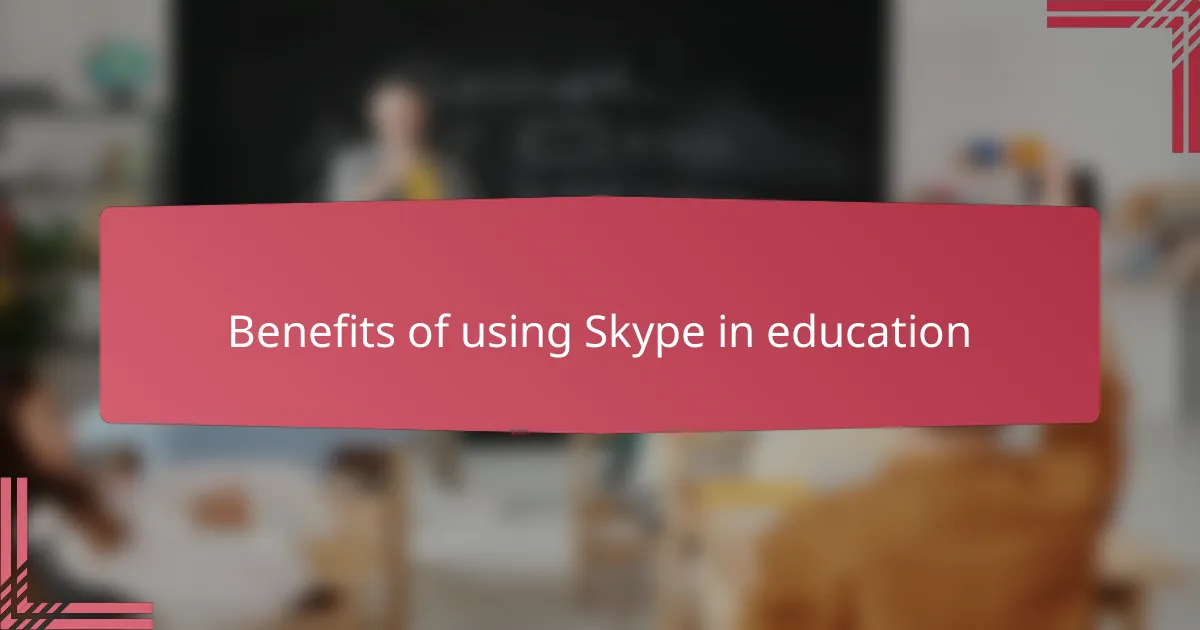
Benefits of using Skype in education
One of the biggest benefits I found using Skype in education was how it instantly collapsed distances. Suddenly, my students could connect with experts, activists, and peers from around the world without leaving the classroom. Isn’t it amazing how a simple video call can bring diverse perspectives right to your students’ eyes and ears?
Skype also made discussions more dynamic and personal. When you see someone’s face and hear their voice in real time, it’s easier to build empathy and genuine curiosity. I noticed that my students were more engaged and asked deeper questions compared to reading about issues in a textbook.
Another advantage I really appreciated was accessibility. Skype allowed us to include guest speakers who couldn’t physically come to school due to time or cost constraints. This widened the range of voices in our conversations and made activism lessons feel more authentic and immediate. Have you tried reaching out to someone miles away and felt that instant connection? That’s the power Skype offers.
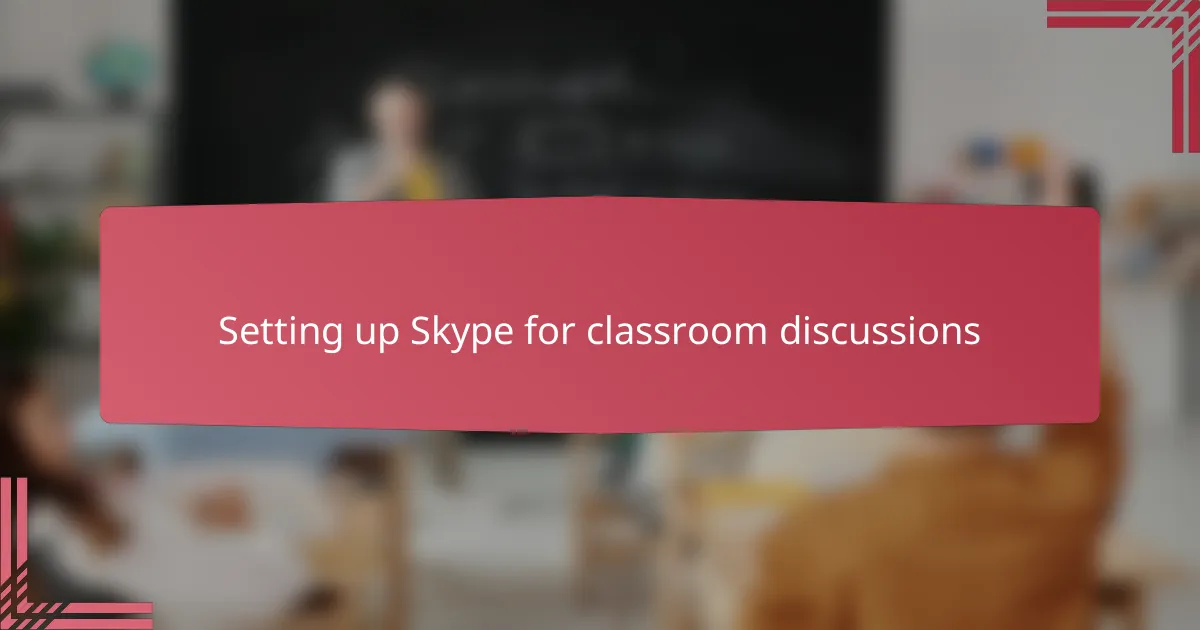
Setting up Skype for classroom discussions
Setting up Skype for classroom discussions was surprisingly straightforward, but I quickly learned that preparation makes all the difference. I remember the first time I tested the connection and video quality—I was nervous the tech might fail, but taking that moment beforehand saved us from awkward delays during class. Have you ever experienced the frustration of technical glitches just as a meaningful conversation was starting?
Creating a dedicated Skype account for the classroom helped me keep everything organized and secure. I also made sure to test audio and camera settings while involving a few students to ensure everyone could see and hear clearly. This small step fostered a sense of responsibility and excitement among my students, making them feel part of the process.
Another key tip I discovered was setting clear expectations with both students and guest speakers. We discussed how to take turns speaking and use the chat respectfully to avoid confusion. With these simple ground rules in place, our Skype discussions stayed focused and inclusive, turning remote voices into real connections that energized our activism lessons.
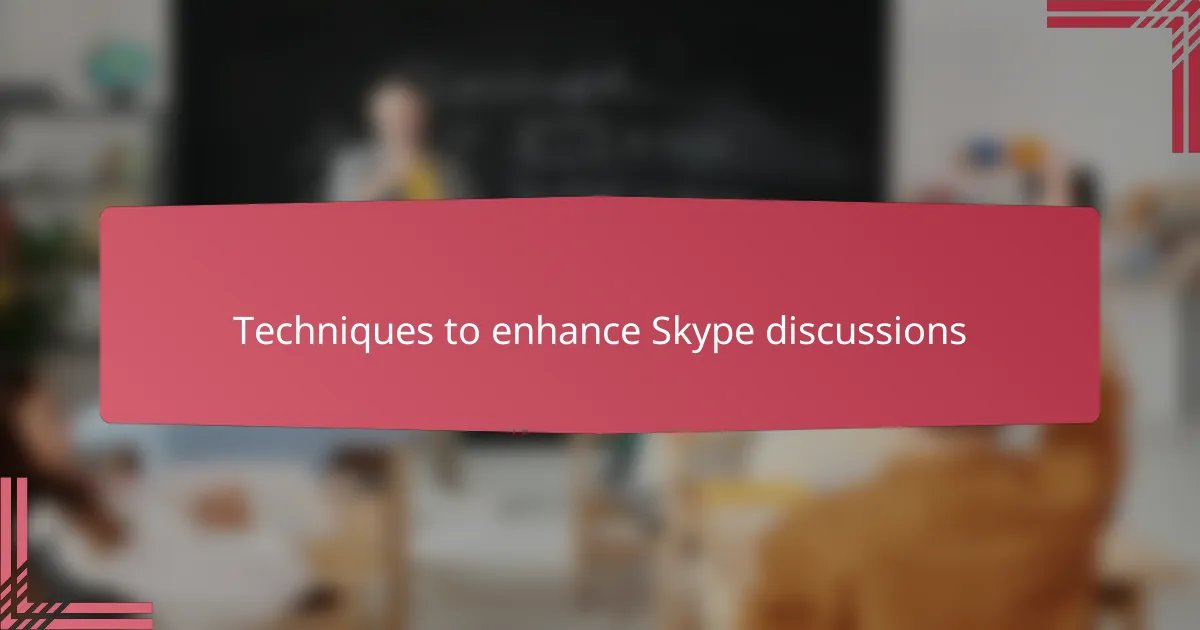
Techniques to enhance Skype discussions
One technique that really transformed my Skype discussions was using open-ended questions tailored to the guest speaker’s expertise. I noticed when I prompted students with thoughtful questions beforehand, their curiosity sparked, leading to richer, more engaging conversations. Have you ever seen a hesitant class suddenly light up because the topic felt personal and relevant?
Another strategy I found effective was incorporating visuals and real-time note-sharing during the Skype call. Displaying key points on a shared screen helped students follow the discussion more closely and kept us all on the same page. It was like creating a digital campfire where everyone could add their thoughts and keep the dialogue flowing smoothly.
Finally, I always built in a reflection moment after the Skype session, inviting students to voice their thoughts or write quick summaries. This not only deepened their understanding but also gave quieter students a chance to express themselves without the pressure of speaking up live. Have you ever been surprised by the insights students share when given that extra time to process? For me, these reflections became a valuable window into their learning journey.

Overcoming challenges with Skype communication
Challenges with Skype communication caught me off guard at first—connection glitches and audio hiccups threatened to derail important conversations. But I quickly realized that rehearsing a backup plan and doing tech checks together with students eased the tension and made us all more confident. Have you ever felt the relief when a test call goes perfectly right before a big discussion?
Sometimes, the delay or lag made overlapping talk frustrating, especially when emotions ran high during activist topics. To manage this, I introduced simple hand-raising signals and encouraged patience, turning what could have been interruptions into moments of respect and active listening. It was amazing how these small adjustments fostered a calmer, more thoughtful exchange.
I also learned that not everyone is comfortable speaking up on camera, so I invited students to type questions or comments in the chat. This quiet space gave voices to those who might otherwise stay silent, enriching our discussions in ways I hadn’t anticipated. Have you noticed how giving multiple ways to participate can unlock unexpected insights?
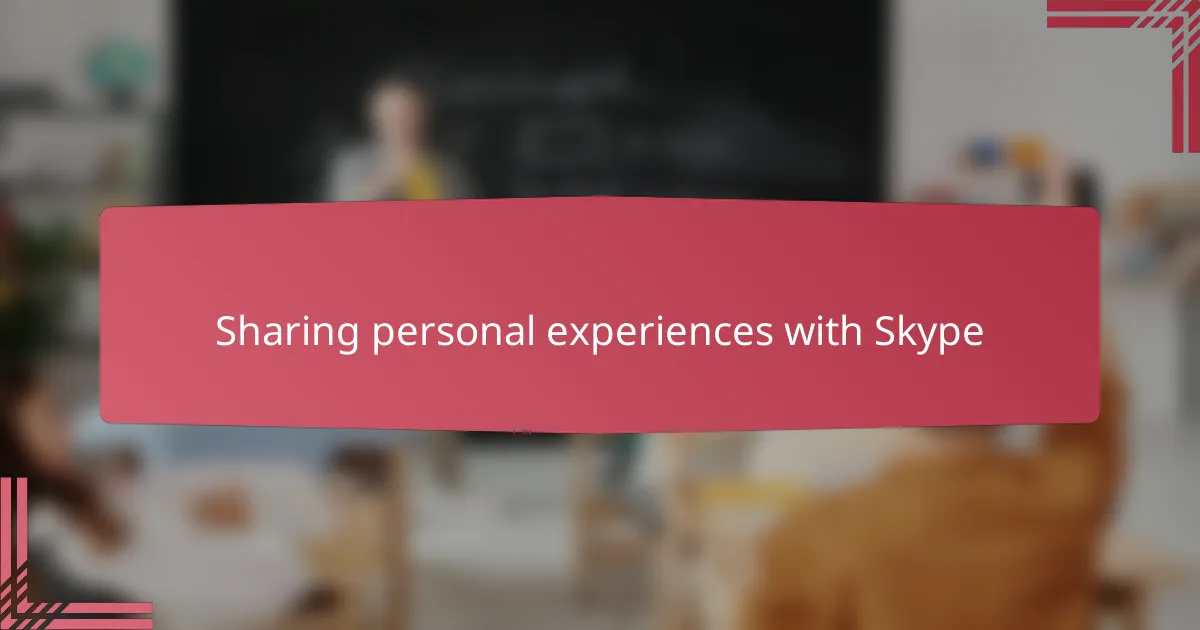
Sharing personal experiences with Skype
Using Skype to share personal experiences added a whole new layer of connection for my students. I recall a moment when a young activist from another country shared their story live—seeing their passion firsthand sparked an empathy in my class that no textbook could create. Have you ever witnessed students’ eyes widen in real time because a distant voice suddenly felt close and real?
I also found that sharing my own experiences during Skype sessions helped break the ice and build trust. When I opened up about challenges I’d faced in activism, students seemed more willing to share their thoughts and questions. It reminded me how personal stories, even mine, can humanize complex topics and invite authentic dialogue.
Sometimes, the magic happened in unexpected ways. One Skype call with a former student turned activist sparked a wave of inspired conversations that lasted long after the session ended. It made me wonder—how often do we underestimate the power of simply sharing who we are, not just what we teach?
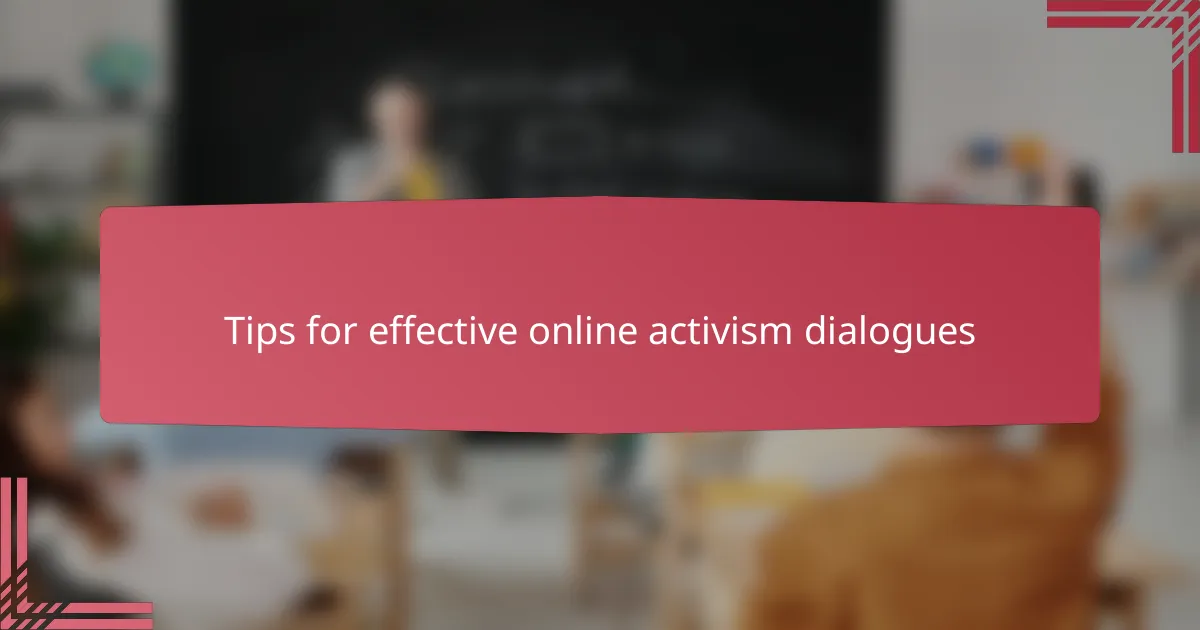
Tips for effective online activism dialogues
To keep online activism dialogues meaningful, I found it crucial to create a space where every voice feels valued. Have you noticed how setting simple ground rules—like taking turns and respectful listening—can transform a chaotic chat into a powerful shared experience? From my experience, this foundation invites deeper engagement and genuine connection.
Another tip that worked wonders for me was encouraging participants to come prepared with questions or thoughts beforehand. When I saw students arrive with curiosity already sparked, the conversation naturally flowed richer and more focused. Isn’t it fascinating how a little prep can turn hesitant voices into confident contributors?
Lastly, I always try to balance speaking time and listening, reminding myself and others to pause and reflect during the discussion. In one particularly charged dialogue, this pause helped us avoid misunderstandings and allowed emotions to settle, leading to more thoughtful responses. Have you ever been surprised at how much silence can actually express?